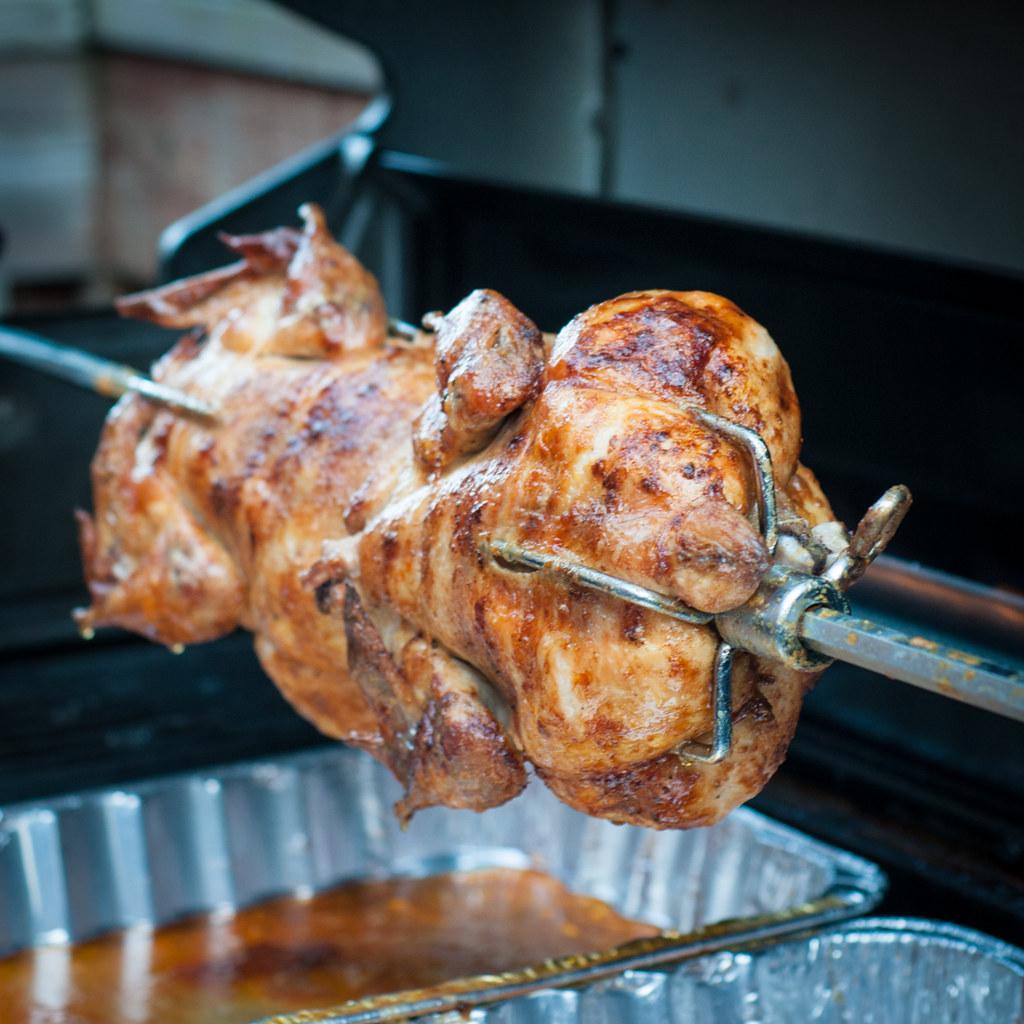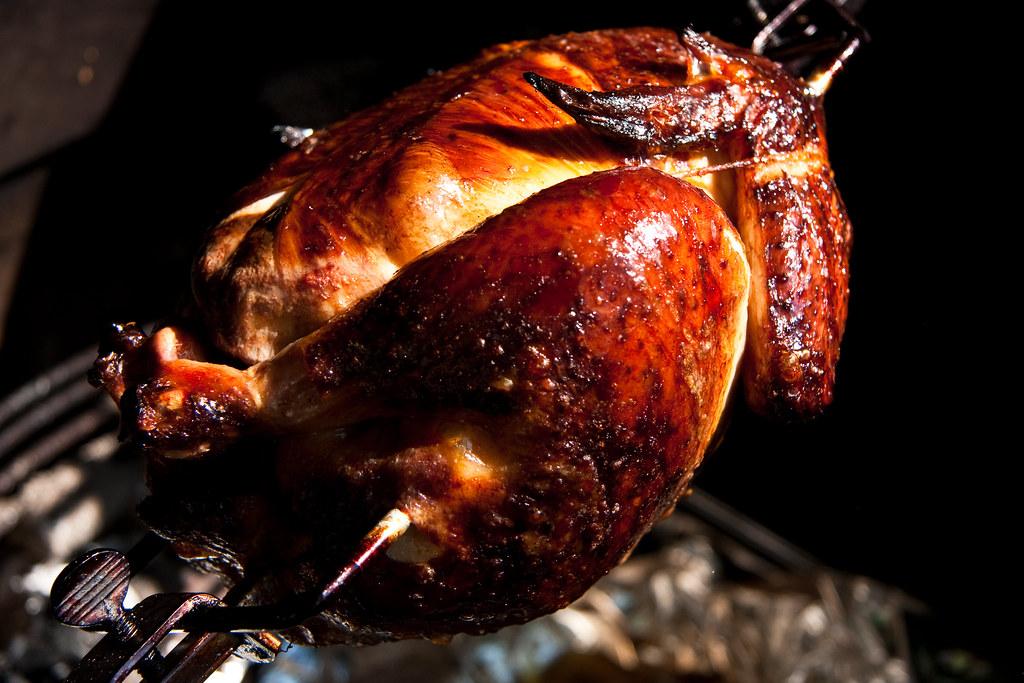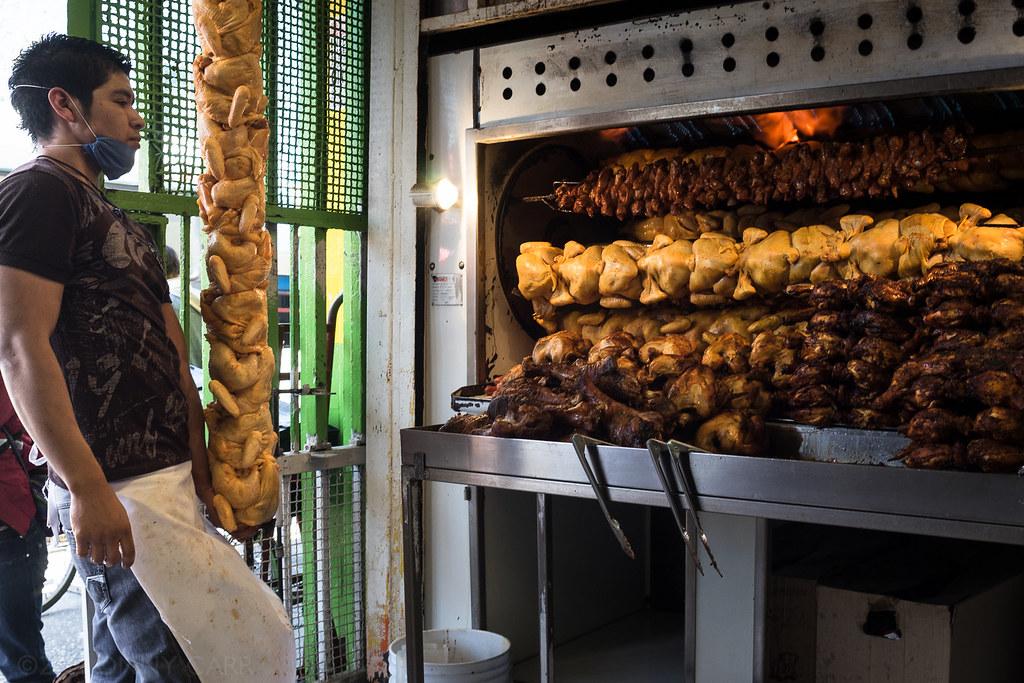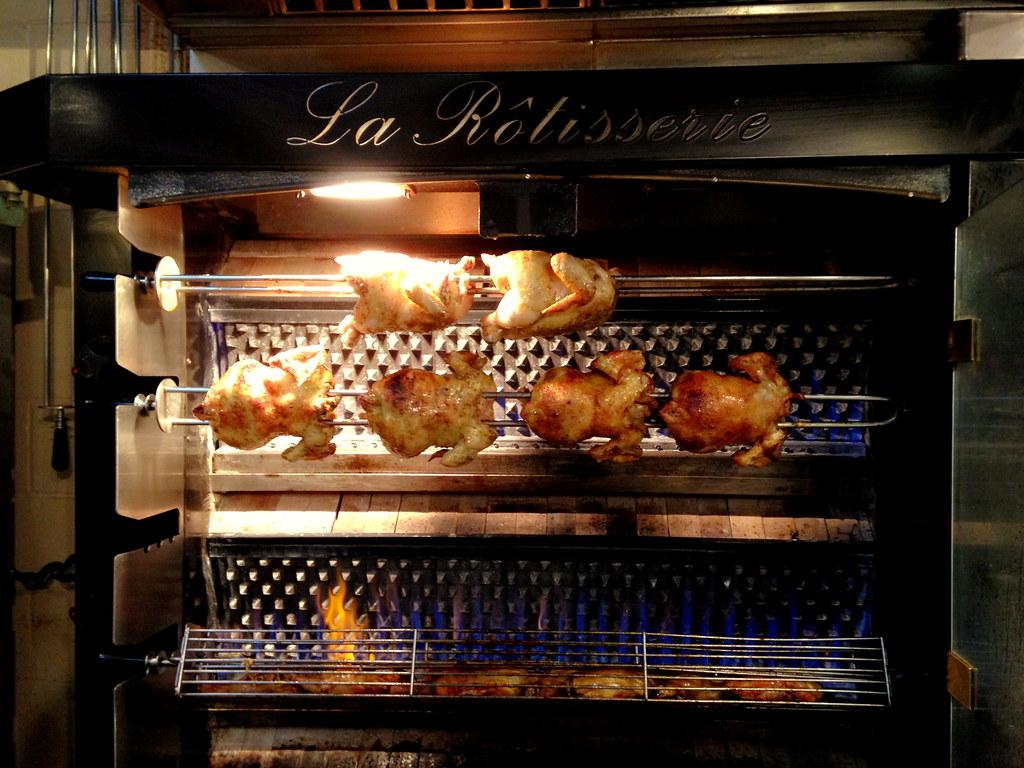
The rotisserie is an invaluable tool for any cooking enthusiast looking to add a new dimension to their culinary creations. Whether you have just acquired a rotisserie attachment for your grill or are eager to make the most of the rotisserie feature on your oven, this article will guide you through the ins and outs of using a rotisserie like a seasoned pro. From choosing the right cuts of meat to mastering temperature control and utilizing the rotisserie basket for delectable sides, this comprehensive guide will equip you with the knowledge and skills to elevate your cooking game to a whole new level. So, let’s dive in and uncover the secrets behind achieving perfectly juicy and evenly cooked rotisserie dishes that are sure to impress your family and friends.
Introduction: Understanding the Functionality and Benefits of a Rotisserie
The rotisserie is a versatile cooking tool that offers a wide range of functionality and benefits for aspiring home chefs. Whether you’re a grilling enthusiast or simply looking to add some variety to your culinary repertoire, understanding how to use a rotisserie can elevate your cooking game to new heights. In this post, we will explore the ins and outs of using a rotisserie, including its benefits and some tips for achieving delicious results.
One of the main functions of a rotisserie is its ability to provide even and consistent cooking. Unlike traditional grilling methods, where the heat source is directly beneath the food, a rotisserie rotates the meat slowly, allowing it to cook evenly on all sides. This results in succulent, tender meats that are evenly cooked throughout and bursting with flavor.
Another great benefit of using a rotisserie is the way it locks in juiciness. As the meat rotates, the natural juices are continuously basted, ensuring that every bite remains moist and flavorful. This method is particularly effective with larger cuts of meat, such as whole chickens or roasts, where it can be challenging to retain moisture during the cooking process. With a rotisserie, you can say goodbye to dry and flavorless meats.
In addition to its cooking benefits, a rotisserie also offers convenience and versatility. Many rotisseries come with adjustable spit positions, allowing you to cook a variety of foods of different sizes. From whole poultry to racks of ribs and even vegetables, the possibilities are endless. Gone are the days of having to turn and flip your meat constantly. With a rotisserie, all you need to do is set it and forget it, giving you more time to relax and enjoy your meal with family and friends.
When using a rotisserie, there are a few key tips to keep in mind to ensure optimal results. First and foremost, make sure to properly secure the meat on the spit, ensuring it is tightly fastened to prevent any movement or slippage during the cooking process. This will help ensure even cooking and prevent any potential accidents.
Additionally, it’s essential to preheat your rotisserie before placing the meat on it. This ensures that the cooking temperature is consistent and helps promote the caramelization of the outer layer, resulting in a beautiful golden brown crust. Remember to monitor the cooking time closely and use a meat thermometer to ensure the meat reaches the desired internal temperature for safety and optimal taste.
In conclusion, a rotisserie is a fantastic cooking tool that provides even cooking, locks in juiciness, and offers convenience and versatility. By understanding how to use a rotisserie and following some simple tips, you can achieve mouthwatering results that will impress your guests and elevate your culinary skills to new heights. So, fire up your rotisserie, get creative with your recipes, and enjoy the delicious benefits this cooking method has to offer.

Selecting the Right Rotisserie: Factors to Consider when Choosing a Model
When it comes to cooking delicious and succulent meals, a rotisserie can be a game-changer. Whether you want to roast a whole chicken, prepare tender ribs, or even grill vegetables, having the right rotisserie can make all the difference. With so many models available in the market, it’s crucial to consider a few factors before making your purchase. Here are some key factors to keep in mind when selecting the right rotisserie for your cooking needs:
Budget:
First and foremost, consider your budget. Rotisseries come in a wide range of prices, so it’s essential to determine how much you are willing to spend. While higher-end models may offer advanced features and durability, don’t fret if you have a limited budget. There are plenty of affordable options available that can still deliver great results.
Cooking Capacity:
Before choosing a rotisserie, consider how much food you typically want to cook at a time. If you frequently entertain or have a large family, opt for a rotisserie with a generous cooking capacity. On the other hand, if you generally prepare meals for one or two people, a smaller rotisserie might be more suitable. Consider your cooking habits and needs to ensure you select the right size for your requirements.
Features and Functions:
- Temperature Control: Look for a rotisserie with adjustable temperature settings, allowing you to have control over the cooking process and achieve perfect results.
- Timer: A timer function can be incredibly handy, ensuring that your meals are cooked to perfection without the risk of overcooking.
- Easy Cleaning: Check if the rotisserie has removable parts or is dishwasher safe, as this can greatly ease the post-cooking cleaning process.
- Accessories: Consider the availability of additional accessories such as rotisserie forks, grill baskets, or skewers that can expand the versatility of your rotisserie.
Build Quality and Durability:
Investing in a rotisserie that is built with high-quality materials can ensure its longevity. Look for models made from sturdy materials like stainless steel or cast iron. Additionally, read reviews or check for warranty information to gauge the rotisserie’s durability and customer satisfaction.
Safety Considerations:
Always prioritize safety when selecting a rotisserie. Look for features such as cool-touch handles to prevent accidental burns, sturdy construction to avoid tipping over, and a reliable power source. Furthermore, ensure the rotisserie has proper certification for electrical safety.

Preparing and Trussing the Meat: Essential Steps for Achieving Perfect Results
Using a rotisserie is a great way to achieve tender and juicy meat, while also imparting a delicious smoky flavor. However, to ensure perfect results, proper preparation and trussing of the meat are essential steps. Follow these tried-and-true tips to get the most out of your rotisserie experience.
-
Choose the Right Cut of Meat:
Selecting the right cut of meat is crucial for a successful rotisserie cooking. Opt for tender cuts such as whole chicken, prime rib, pork loin, or leg of lamb. These cuts not only cook evenly but also retain their juiciness during the rotisserie process. -
Seasoning for Flavorful Results:
Before trussing the meat, seasoning it properly is key to achieving excellent flavor. You can go beyond basic salt and pepper by using your favorite rubs or marinades. Whether it’s a simple blend of herbs and spices or a complex marinade, make sure to coat all sides of the meat generously for a flavor-packed outcome. -
Trussing for Even Cooking:
Trussing is the process of tying up the meat securely with kitchen twine to maintain its shape during cooking. This step is vital, as it ensures even cooking and prevents the meat from falling apart. To truss the meat, start by tying up the legs tightly and then secure the wings to the body. This will help the meat cook evenly and retain its moisture. -
Safety First:
When using a rotisserie, it’s essential to prioritize safety. Always follow the manufacturer’s instructions and take necessary precautions to prevent accidents. Make sure the rotisserie is set up on a stable surface away from flammable materials. Use heat-resistant gloves when handling hot equipment and keep a fire extinguisher nearby, just in case. -
Keep an Eye on the Temperature:
Monitoring the internal temperature of the meat is crucial for achieving perfect results. Invest in a quality meat thermometer to gauge when the meat is done. Different cuts of meat will have varying optimal cooking temperatures, so refer to a cooking chart or recipe to determine the right internal temperature to achieve your desired doneness.
In summary, mastering the art of using a rotisserie starts with proper meat preparation and trussing. Choose the right cut of meat, season it generously, and securely truss it before placing it on the rotisserie. Prioritize safety while cooking and keep an eye on the internal meat temperature to achieve exceptional results every time. With these essential steps, you’ll be on your way to enjoying perfectly cooked and delicious rotisserie meals.
Using the Rotisserie: Step-by-Step Guide to Properly Cooking Your Food
Step-by-Step Guide to Properly Cooking Your Food
Using a rotisserie to cook your food can bring out incredible flavors and provide a unique cooking experience. Whether you’re grilling a whole chicken, a roast, or even vegetables, the rotisserie can help you achieve mouthwatering results. To make the most of your rotisserie, follow these simple steps:
1. Preparing the Meat
Before using the rotisserie, ensure that your meat is properly prepared. This includes marinating, seasoning, and trussing the meat. Marinating your meat not only adds flavor but also tenderizes it. Season it with your favorite spices or herbs, and then truss the meat to ensure even cooking and to prevent it from falling apart during the rotation.
Pro Tip: Use a brine or dry rub to infuse the meat with extra flavor. Experiment with different combinations to find your perfect seasoning.
2. Assembling the Rotisserie
Follow the manufacturer’s instructions to assemble your rotisserie properly. Ensure that the spit rod is securely attached and centered on the motor. Place a drip pan underneath to catch any drippings and prevent flare-ups. If needed, adjust the heat settings on your grill or rotisserie to achieve the desired cooking temperature.
3. Securing the Meat
Slide the spit rod through the center of the meat, making sure it’s positioned securely. Use trussing forks or other mechanisms to secure the meat firmly, preventing it from moving or falling off during the rotational cooking process. Properly securing the meat ensures even cooking and prevents accidents.
4. Cooking and Rotating
Place the spit rod with the meat on the rotisserie, making sure it’s balanced. Start the rotisserie motor, allowing the meat to slowly rotate. Close the lid and let the magic happen! The rotating motion ensures even cooking and helps to preserve the meat’s juices. Keep an eye on the thermometer to maintain the desired temperature throughout the cooking process.
5. Checking for Doneness
Use a meat thermometer to check for doneness. Different types of meat require different internal temperatures for safe consumption. Refer to a cooking chart or recipe for the specific temperature guidelines. Once the meat has reached the desired temperature, turn off the rotisserie motor and carefully remove the meat from the spit rod, using protective gloves or mitts.

Best Practices for Maintaining and Cleaning Your Rotisserie
Maintaining and cleaning your rotisserie is essential to ensure its longevity and optimal performance. Here are some best practices to follow:
-
Regular cleaning: Cleaning your rotisserie after each use is crucial to remove any leftover food particles and grease. Use a mild detergent and warm water to clean the exterior and interior surfaces. Avoid abrasive cleaners or scrub brushes that can damage the finish. Rinse thoroughly and dry with a clean cloth before storing.
-
Burn-off method: To remove stubborn residue or grease buildup, you can use the burn-off method. Preheat your rotisserie to the highest temperature setting and let it run empty for about 15-20 minutes. This will burn off any residual grease and make it easier to clean. Remember to wear protective gloves and keep a close eye on the process.
-
Cleaning the spit rods and forks: The spit rods and forks are two crucial components of the rotisserie. Clean them thoroughly after each use by soaking them in warm soapy water for a few minutes. Use a soft brush to remove any food particles and rinse well. Ensure they are completely dry before storing to prevent rusting.
-
Check and clean the drip pan: The drip pan collects the drippings and grease, preventing them from falling onto the heating elements. Regularly check and clean the drip pan to avoid any buildup. Remove it carefully and empty the contents into a proper container. Wash the drip pan with warm soapy water, rinse, and dry before placing it back in the rotisserie.
-
Lubricate moving parts: Periodically lubricate the moving parts of your rotisserie to maintain smooth operation. Apply a food-grade lubricant to the spit rod bushing, motor gears, and other moving components as recommended by the manufacturer. This will help minimize friction and ensure the rotisserie continues to rotate effortlessly.
By following these , you can keep it in excellent condition and enjoy deliciously cooked meals for years to come. Remember to always refer to the manufacturer’s instructions for specific care and maintenance guidelines for your particular model. Happy rotisserie cooking!
Q&A
Q: What is a rotisserie and what is it used for?
A: A rotisserie is a kitchen appliance or cooking method that involves roasting meat, such as poultry, beef, pork, or even whole animals, on a rotating spit. It allows for slow and even cooking, resulting in juicy, flavorful meat with a crispy exterior.
Q: How does a rotisserie work?
A: A rotisserie typically consists of a spit, which is a long metal rod that holds the meat, and a motorized device to rotate the spit. The heat source, often located at the bottom or rear of the appliance, provides consistent heat to the meat as it rotates, ensuring even cooking.
Q: Why should I consider using a rotisserie instead of other cooking methods?
A: Using a rotisserie offers several advantages over other cooking methods. Firstly, the slow rotation of the spit allows for self-basting, keeping the meat moist and tender. Additionally, the even heat distribution ensures that the meat cooks evenly from all sides, resulting in a perfectly cooked roast. Finally, the rotisserie allows the meat to cook with minimal handling, making it a hassle-free option.
Q: What types of meat can be cooked on a rotisserie?
A: A rotisserie can accommodate a variety of meats, including poultry like whole chickens, turkeys, or ducks, as well as large cuts of beef such as prime rib or beef tenderloin. It is also suitable for cooking pork roasts, leg of lamb, or even whole animals like suckling pigs or game birds.
Q: Do I need any special equipment to use a rotisserie?
A: Yes, to use a rotisserie, you will need the actual rotisserie appliance, which can be either a standalone unit or an attachment for an existing grill or oven. Additionally, you will require a compatible rotisserie spit, prongs or forks to secure the meat, and a thermometer to monitor the internal temperature of your roast.
Q: How do I prepare the meat before using a rotisserie?
A: Before using a rotisserie, it is essential to properly prepare the meat. This typically involves seasoning the meat with herbs, spices, and marinades to enhance the flavor. Indentations can be made in thicker cuts to ensure even cooking, and the meat should be securely fastened onto the spit with prongs or forks to prevent it from slipping during rotation.
Q: What are some tips for using a rotisserie effectively?
A: To use a rotisserie effectively, make sure to preheat the appliance before cooking and allow sufficient cooking time based on the weight of your meat. It is essential to monitor the internal temperature with a thermometer to ensure food safety. Additionally, baste the meat occasionally during cooking to enhance the flavors and prevent drying out.
Q: How do I clean and maintain a rotisserie?
A: Cleaning a rotisserie involves removing the spit and prongs and washing them with warm, soapy water. The main unit can be wiped down using a damp cloth. Refer to the manufacturer’s guidelines for any specific cleaning instructions. Regular maintenance may include checking the motor, lubricating moving parts, and replacing any worn-out components.
Q: Are there any safety precautions to keep in mind when using a rotisserie?
A: Safety should always be a priority when using a rotisserie. Ensure that the unit is stable and placed on a heat-resistant surface. Keep children and pets away from the appliance while it is in use. Additionally, always use oven mitts or gloves when handling hot parts or removing the cooked meat from the spit. In conclusion, mastering the art of using a rotisserie brings forth countless culinary possibilities. Whether you’re a seasoned chef or an amateur cook, this versatile cooking method can elevate your meals to new heights. By following the steps outlined in this article, you now have the knowledge and confidence to operate a rotisserie efficiently and safely. Remember to choose the right cuts of meat, marinate them adequately, and ensure a balanced heat for perfectly succulent and evenly cooked dishes. Experiment with various seasonings and flavors to cater to your personal preferences and explore a wide range of cuisines. With practice and patience, you’ll soon be impressing friends and family with delectable rotisserie creations. So go ahead, fire up that rotisserie, and embark on a culinary journey filled with tantalizing flavors and culinary triumphs. Happy cooking!






